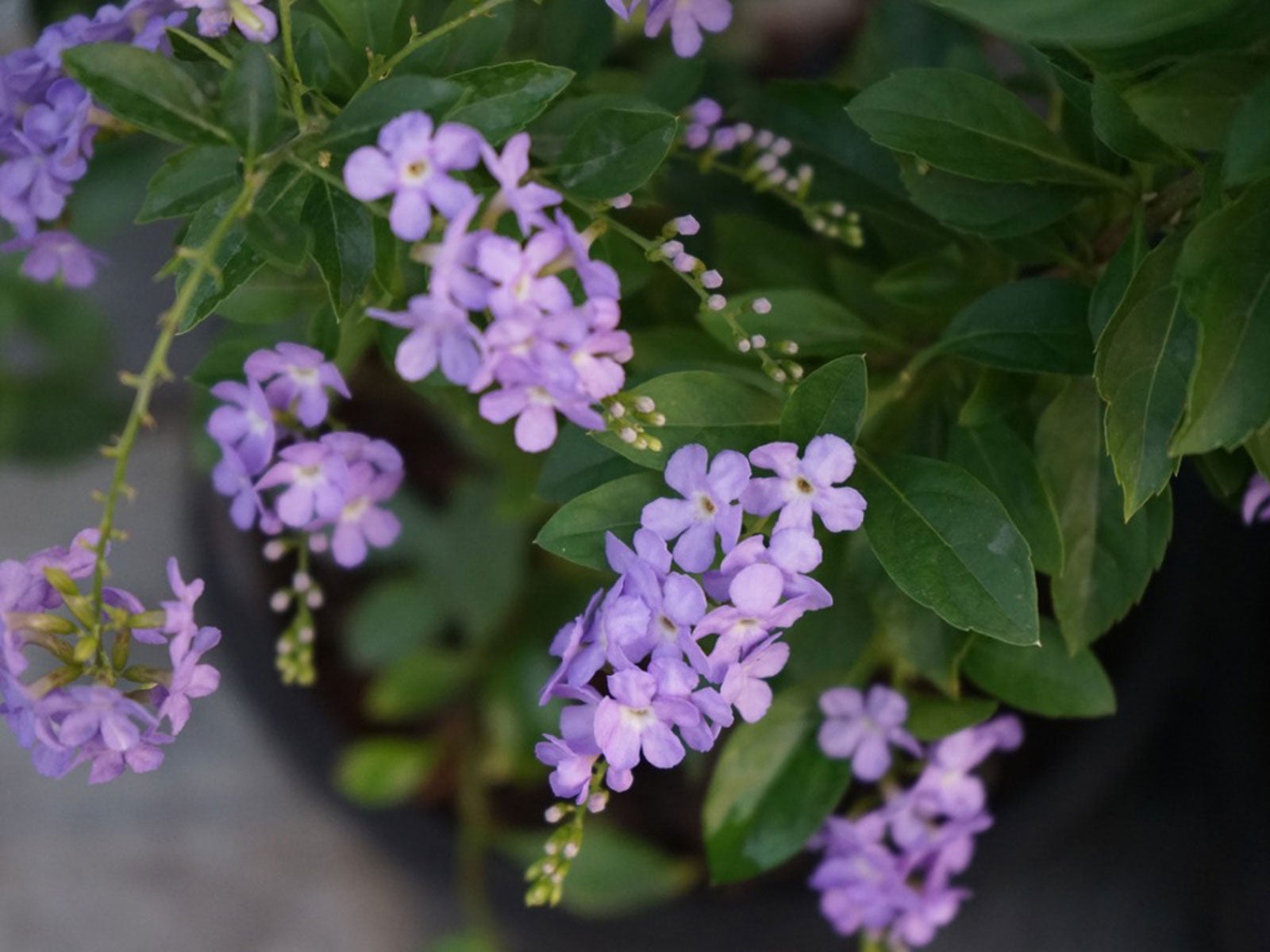Care Of Duranta: How To Grow Duranta Plants

The American tropics are home to over 30 different species of evergreen Duranta plants, a member of the Verbena family. In the United States, the Golden Dewdrop species is cultivated. In all areas apart from the USDA plant hardiness zones 8-11, this plant is treated as an annual. Let's learn more about Duranta propagation and care in the home garden.
Duranta Flowering Plant Info
The Duranta flowering plant (Duranta erecta) may reach up to 10 feet (3 m.) in height, and flowers profusely from summer until the first heavy frost. The shrub-like plant is multi-stemmed and the branches are somewhat droopy. The stems may have sharp spines. Orchid-like flowers may be light blue to light purple in color. Some plants develop loads of yellow, ball-shaped drupes. Chemicals in the fruit may make them poisonous to humans, but harmless to birds that enjoy them immensely.
How to Grow Duranta
If you live in an area where Duranta plants are treated as annuals, a large container (such as a half whiskey barrel) is a fantastic place to grow the plant. When the weather becomes chilly, you can bring the plant inside and place it near a south-facing window for beautiful color all winter long. Duranta plants prefer rich organic soil that is somewhat loamy and drains well. It is especially important to keep soil light if you are planting in a container. Be sure that your container has plenty of drainage holes. If planting in the ground, choose a location that receives full to part sun for best flowering display. Allow plenty of room for this tropical beauty to spread out.
Care of Duranta Plants
Slow -fertilizers help encourage prolific flowering and fruiting. It is important to water frequently while the plant is establishing. Water requirements after establishment are low, watering just enough to keep the soil moist and more during times of drought. Some renewal pruning is necessary to keep a nice shape. Duranta propagation is fairly easy using a piece of the woody limb (hardwood cutting) taken in the summer. Dip the end of 6-inch (15 cm.) piece of limb into rooting compound and plant. Roots will establish fairly quickly. Seeds are also available and also seem to do well.
Gardening tips, videos, info and more delivered right to your inbox!
Sign up for the Gardening Know How newsletter today and receive a free copy of our e-book "How to Grow Delicious Tomatoes".
-
 Moody Blooms For Spring: 8 Types Of Black Flowers To Add Drama To Spring Displays
Moody Blooms For Spring: 8 Types Of Black Flowers To Add Drama To Spring DisplaysFrom midnight burgundies to inky violets, several types of black flowers can enrich and embolden a spring display. Try these brooding bloomers for a moody garden
By Tonya Barnett
-
 My Homemade Orchid Fertilizer Always Brings More Blooms – Here's The Easy Recipe That Transforms Plants
My Homemade Orchid Fertilizer Always Brings More Blooms – Here's The Easy Recipe That Transforms PlantsScientist-turned-gardener Mary Ellen Ellis shares her tried-and-tested DIY orchid fertilizer recipe, plus more ingredients to try for healthy, happy plants.
By Mary Ellen Ellis